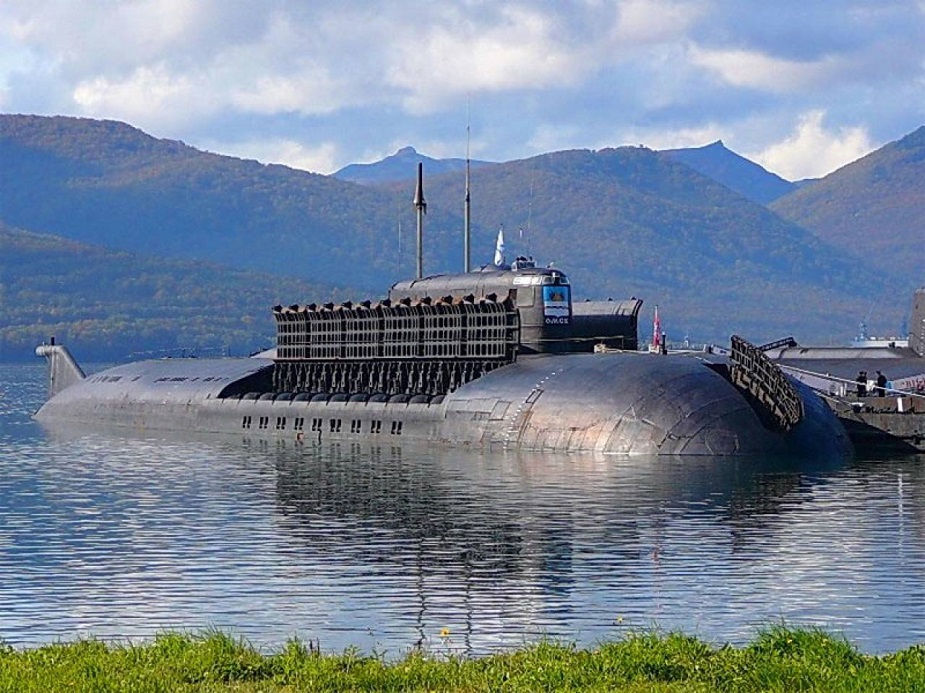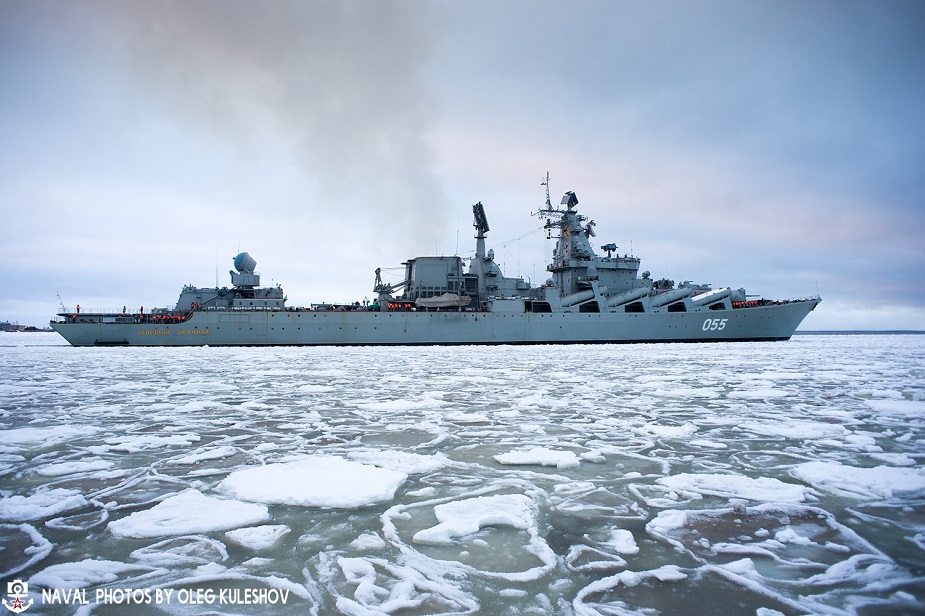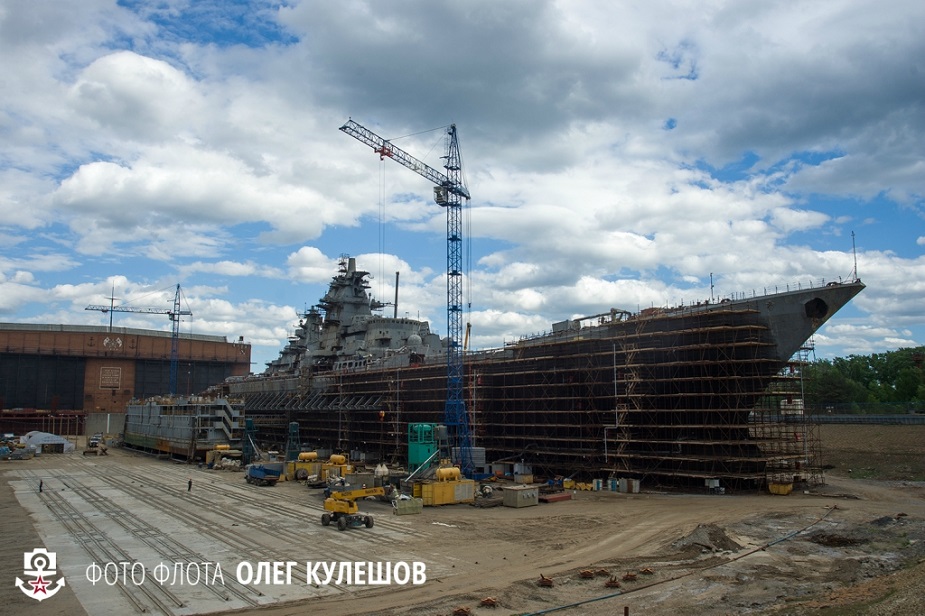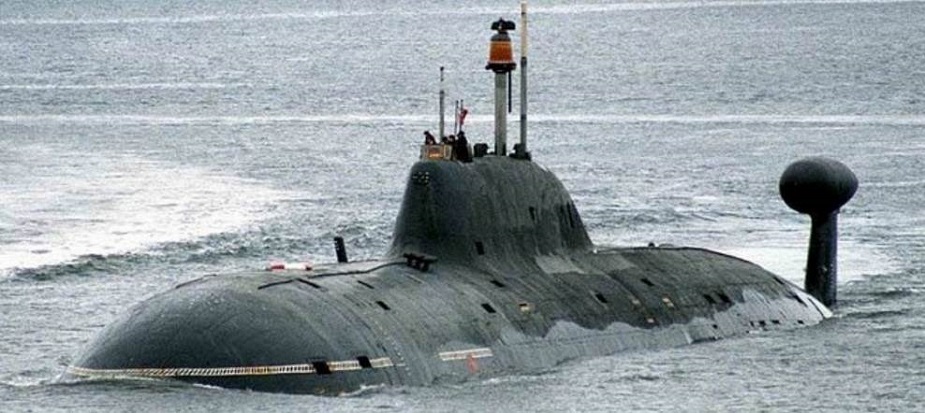In early 2010s the successes in Russian military buildup triggered an euphoria. It was characterized by calls to resume the production of missile-carrying trains, sea skimmers, air-cushioned ships and total upgrade of the fleet inherited from the USSR. However, it should be admitted now that the program had failed, expert Alexander Shishkin writes in the Vzglyad business newspaper.
 Russian Navy submarine Omsk (K-186), a Project 949A SSGN (NATO designation: Oscar II), with all missile hatches opened. The class is being modified to launch Kalibr SLCM. Picture via airbase.ru
Russian Navy submarine Omsk (K-186), a Project 949A SSGN (NATO designation: Oscar II), with all missile hatches opened. The class is being modified to launch Kalibr SLCM. Picture via airbase.ru
A technical project was approved in 2012 to increase the firepower of nuclear cruise missile submarines (SSGN) of project 949A three-fold by replacing Granit missiles with Onix and Kalibr. Some reports said all the five submarines of the Pacific fleet had to be upgraded. In 2013 Zvezda shipyard began modernizing the Irkutsk, next year the Chelyabinsk arrived and the Tver had to become the third submarine.
The plans were even bigger for SSN of project 971. The whole series of ten submarines was to be upgraded. In 2011 the Leopard arrived at Zvyozdochka shipyard to become the lead boat of project 971M. The modernization was to last three years. Although the Leopard upgrade was delayed at the end of 2013, the Volk, the Samara, the Bratsk U-boats arrived at the shipyard in 2014.
 The Russian Navy Slava-class cruiser Marshal Ustinov arriving at its Northern Fleet Base of Severomorsk following its modernization. 2017 Picture by Oleg Kuleshov
The Russian Navy Slava-class cruiser Marshal Ustinov arriving at its Northern Fleet Base of Severomorsk following its modernization. 2017 Picture by Oleg Kuleshov
The situation with surface warships was also inspiring. The Zvyozdochka accepted for interim overhaul the Marshal Ustinov missile cruiser of project 1164 which had to return to the fleet in 2014 followed by the upgrade of the Moskva and the Varyag cruisers. In 2013 a contract was signed with Sevmash shipyard for interim overhaul repairs and modernization of the Admiral Nakhimov heavy nuclear missile cruiser up to project 11442M which was one of the two cruisers suitable for upgrade. The work had to be completed in 2018. In 2013 the 35th shipyard in Murmansk began interim overhaul (up to 2016) of the Admiral Chabanenko big antisubmarine warfare ship. It was planned to overhaul all the seven destroyers of project 956 and upgrade all the eight big antisubmarine ships of project 1155.
It became clear late last year that the concept of "a new warship in the old hull" which boiled down to a quick and cheap renewal of the fleet by interim overhaul and modernization of Soviet projects failed completely.
The transfer of the Irkutsk to the fleet (and consequently of the Chelyabinsk) was delayed by four years - from 2017 to 2021 and the overhaul time upped to eight years (the submarine construction took twice less time). The statement of the defense ministry that 2021 is a realistic deadline for the fleet to get all the four submarines back is dubious provided the upgrades of the Tver and the Tomsk have not yet begun.
The situation with SSN of project 971M is also a plight. The number of submarines in the series was first cut to six and then to four. The Leopard return to the fleet was postponed from 2015 to 2019, but a source at Zvyozdochka said the four-year delay is too optimistic. If the work at three other submarines accelerates 1.5-2-fold the fleet will get the final 971M in 2023-2024 together with the last SSGN of project 885M or even after them which makes SSN modernization senseless and inappropriate.
 Project 11442 heavy nuclear-powered cruiser Admiral Nakhimov is being upgraded to the Project 11442M configuration. 2017 picture by Oleg Kuleshov
Project 11442 heavy nuclear-powered cruiser Admiral Nakhimov is being upgraded to the Project 11442M configuration. 2017 picture by Oleg Kuleshov
As for surface warships, the Nakhimov modernization was delayed from 2018 to 2021-2022 and the overhaul risks extending beyond the benchmark of 7.5 years while it took six years to build the cruiser. The Moskva missile cruiser has been docked for over two years. If Sevastopol shipyard accepts it for overhaul this year, the Moskva would stand idle for at least eight years.
Delays and unexpected modernization plans will make the Chebanenko leave the shipyard not earlier than 2022-2023 and its idle time will be close to 13 years. Three out of seven project 956 destroyers will likely remain and only one is undergoing interim overhaul. Only the Tributs has been overhauled with minimal upgrade out of eight big antisubmarine warfare ships and now the work is ongoing on the Shaposhnikov which is to become the lead ship of project 1155M but not earlier than in 2019.
The systemic crisis with interim overhaul is incomplete without the Vepr SSN of project 971, the Tambov of project 671RTMK, the Alrosa diesel-electric submarine of project 877 and the Neustrashimy frigate of project 11540. They are all overhauled without major modernization and the result is not inspiring. Nuclear submarines are due to leave Nerpa shipyard in 6-7.5 years after the beginning of the overhaul with a 4-6-year delay. If a miracle happens and the Alrosa is commissioned this year, the overhaul at the 13th shipyard would last 4-4.5 years since the U-boat arrived there.
The Neustrashimy will leave Yantar shipyard in 2019 instead of 2015 and the overhaul will last six years (it was built in less than four years).
 Russian Navy Northern Fleet’s K-157 Project 971 nuclear-powered submarine Vepr. Picture by Ilya Kurganov
Russian Navy Northern Fleet’s K-157 Project 971 nuclear-powered submarine Vepr. Picture by Ilya Kurganov
It would be appropriate to drop the traditionally cited reasons for the crisis in Russian military shipbuilding which are a lack of personnel, cooperation and finances. It is not the end of the 1990s or the beginning of the 2000s. The bottom of the crisis has been passed. The United Shipbuilding Corporation (USC) has been operating for ten years "to preserve and develop the scientific and production potential of the defense industry, pull intellectual, production and financial resources in the shipbuilding for the Navy." If they still do not know the reasons for the problems, they should blame the USC leadership and its shipyards.
Let’s consider three other reasons for the shipbuilding plight. Even Soviet authorities which were known for their voluntarism consulted the interested parties before making decisions in the sphere of military buildup. Today the arms programs are thoroughly agreed with all participants. Nevertheless, inaction and negligence of some contractors delay and collapse the agreed and adopted programs. An example is offered by nuclear submarines of project 971M.
There is no doubt that the decision on a deep upgrade of project 971 SSN was adopted collectively by the Defense Ministry, the Navy, the USC, the Malakhit Design Bureau and Zvyozdochka shipyard. They agreed the schedule of the work for one boat "at close to three years". There are no claims to the Navy and designers, but Malakhit could hardly know the capacity of the shipyard in detail. But Zvyozdochka leadership was well aware of it and its consent means either incompetence or roguery (decreasing the real time two-three-fold in order to get a lucrative contract).
© Copyright 2018 TASS. All rights reserved. This material may not be published, broadcast, rewritten or redistributed.










